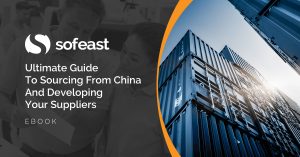Last year I wrote about a very common problem in China Supply Chain Transparency and Monitoring: Not Getting Easier… and this year we are still lamenting that same problem:
Further down the supply chain, unauthorized subcontracting is still very, very common. We noticed this is particularly true of metal surface treatment processes that are done outside of the “main factory” (which would typically do casting and CNC lathe/milling).
A few examples:
- Plating
- Polishing
- Painting, coating, e-coating, anodizing
These processes, if they are not done well, create aesthetic issues and longer-term protection and/or performance problems on the product. They are often among the most critical process steps when it comes to ensuring product quality!
And yet, they are usually outside the “main factory”.
We usually advise our clients to select suppliers that do several processes in house, a form of vertical integration where they have more control. For example, a casting factory that also does CNC machining and powder coating, rather than a casting factory that sends parts out for lathe machining and then out to another place to do the painting.
Vertical integration benefits in manufacturing
Vertical integration in the supply chain like this provides several benefits:
1. Transparency
The supplier is not worried about you, their customer, picking a replacement for the casting but keeping the same painting factory (which might have been trained extensively and might do a great job), for example. It means they tend to be more open.
2. Control
There are several reasons for that:
- If you buy the parts + several processing steps from them, you are less likely to be a tiny customer for someone in the supply chain and to be treated as such.
- If the supplier doesn’t want to hide things from you, you can probably visit them regularly.
- If you visit regularly, if you approve their internal processes and you don’t allow for subcontracting, it is not very likely that they will subcontract behind your back. That means fewer bad surprises.
3. Speed
I came upon a video that puts it nicely this past weekend.
A Toyota old-timer explained why, in many cases, internalizing production steps allows for much higher speed:

In Toyota’s approach, processes are typically internalized by purchasing and upgrading equipment that is as low-tech as possible.
It means the equipment is less expensive but also that it can be redeployed if needed (flexible). Having to add manual labor in the manufacturing process is not a problem in itself, and at the end of the day it might mean lower costs, better uptime, and higher flexibility.
Toyota’s main reason to push for this is the simplification of material flow. They add up the lead times for each manufacturing step and for logistics. More handoffs from company to company naturally makes everything longer, as shown in the image above.
The objective of speed
Speed (getting from design and manufacturing to payment as fast as possible) is actually one of their primary objectives.
That’s what Taiichi Ohno meant in this quote:
All we are doing is looking at the time line, from the moment the customer gives us an order to the point when we collect the cash. And we are reducing the time line by reducing the non-value adding wastes.
Here it is, again in the video I mentioned above:

And that makes sense. Faster processes (with good material flow) allow for earlier and easier detection of defects, which in turn helps keep costs low. It also requires less inventory, which is costly.
So, in the end, vertical integration also comes with lower cost, but only if it is planned and managed well. Purchasing expensive high-tech equipment and not maintaining it properly, for example, can lead to much higher costs.
Conclusion
The problem we see every day is, most Chinese factories don’t understand all that and, as result, have high MOQs, long lead times, and frequent delays.
They also often specialize in just 1 or 2 processes and try to be as efficient as possible at those processes, and outsource a lot of work. That often comes with a loss of control and substantial quality issues…
Is this what you have also seen with your suppliers? Have you streamlined your supply chains and are already enjoying vertical integration benefits? Let me know, please.
Ultimate Guide To Sourcing From China And Developing Your Suppliers [eBook]
This FREE eBook starts from the beginning, discussing whether you need to hire a sourcing agent, and follows the sourcing process right through to developing a trusted supplier’s quality and productivity.
There are 15 chapters over 80+ pages to explore, providing exhaustive guidance on the entire sourcing and supplier development process from start to finish, including:
- Identifying suppliers,
- Negotiations,
- Quality inspections,
- Developing Chinese suppliers,
- Improving factory quality and productivity,
- and much more…



